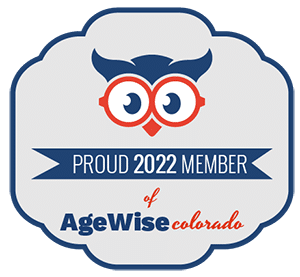When people hear the term “Reverse Mortgage,” they often react based on outdated information or misleading financial advice from personalities like Dave Ramsey and Suze Orman. However, reverse mortgages are valuable financial tools for retirees, just like permanent life insurance.
Both financial products are used for retirement planning, providing cash flow, financial security, and potential benefits to heirs. But while they share some similarities, they serve very different purposes.
This guide will compare reverse mortgages and permanent life insurance, breaking down their key similarities and differences to help you make an informed financial decision.
Table of Contents
How a Reverse Mortgage is Like an Annuity
A Reverse Mortgage and Permanent Life Insurance are both long-term financial planning tools designed to provide stability and security in retirement. Below are their key similarities:
1. Financial Planning Tools
- Reverse Mortgage: Allows homeowners to tap into their home equity for financial flexibility.
- Permanent Life Insurance: Provides a death benefit to heirs and can accumulate cash value over time.
2. Access to Funds
- Reverse Mortgage: Homeowners receive monthly payments, lump sums, or lines of credit based on their home equity.
- Permanent Life Insurance: Policyholders can access funds through policy loans or withdrawals from the cash value.
3. Can Benefit Heirs
- Reverse Mortgage: If there is remaining home equity, it goes to the heirs after the loan is repaid.
- Permanent Life Insurance: Pays a death benefit directly to heirs, typically tax-free.
4. Long-Term Commitment
- Reverse Mortgage: Homeowners must maintain the home, pay property taxes, and insurance to keep the loan in good standing.
- Permanent Life Insurance: Policyholders must continue paying premiums to keep the policy active.
Key Differences Between a Reverse Mortgage and Permanent Life Insurance
While they have some similarities, their primary functions and financial impact are very different. Below is a side-by-side comparison:
| Feature | Reverse Mortgage | Permanent Life Insurance |
|---|---|---|
| Purpose | Provides cash flow by tapping into home equity | Provides a death benefit to heirs and potential cash value during life |
| Eligibility | Must be 62 or older and own a home | Available at any age, subject to health and underwriting |
| Source of Funds | Home equity is converted into loan proceeds | Premiums paid build cash value, which can be borrowed against |
| Repayment Obligation | Loan is repaid when homeowner sells, moves out, or passes away | Policy loans must be repaid or deducted from the death benefit to keep coverage active |
| Impact on Heirs | Home may need to be sold to repay loan unless heirs pay off the balance | Death benefit is paid directly to heirs, usually tax-free |
| Monthly Costs | No required mortgage payments, but property taxes, insurance, and maintenance must be paid | Requires ongoing premium payments to keep the policy active |
| Risk of Lapse or Foreclosure | Loan becomes due if homeowner fails to meet loan terms | Policy can lapse if premiums aren’t paid or cash value is depleted |
| Tax Benefits | Reverse mortgage proceeds are typically not taxable | Death benefits are usually tax-free, and cash value grows tax-deferred |
Breaking Down the Key Differences
1. Purpose & Function
- A Reverse Mortgage provides cash flow by converting home equity into usable funds, helping retirees stay in their homes while supplementing their income.
- Permanent Life Insurance provides a financial legacy for heirs while offering optional cash value access during life.
2. Eligibility & Accessibility
- Reverse Mortgages are only available to homeowners aged 62+ who meet loan conditions.
- Permanent Life Insurance can be purchased at almost any age, though premiums are based on age and health.
3. Source of Funds
- Reverse Mortgages use home equity, meaning homeowners borrow against their property’s value.
- Permanent Life Insurance requires ongoing premium payments, which build cash value over time.
4. Repayment Obligations
- A Reverse Mortgage is a loan—it must be repaid when the homeowner sells, moves out, or passes away.
- A Permanent Life Insurance policy only requires repayment if policyholders take out loans—otherwise, it simply pays a death benefit to heirs.
5. Impact on Heirs & Estate Planning
- With a Reverse Mortgage, heirs inherit the home but must repay the loan balance (or sell the home to cover it).
- With Permanent Life Insurance, heirs receive a tax-free death benefit, with no repayment obligations.
6. Ongoing Costs & Risk of Lapse
- Reverse Mortgages have no required payments, but homeowners must cover taxes, insurance, and maintenance.
- Permanent Life Insurance requires ongoing premium payments—if not paid, the policy can lapse.
7. Tax Benefits
- Reverse Mortgage funds are typically not taxable and do not count as income.
- Life Insurance death benefits are tax-free, and cash value grows tax-deferred.
Which Option is Right for You?
A Reverse Mortgage may be better if:
✔ You are 62+ and want to access home equity without monthly payments.
✔ You want financial flexibility while staying in your home.
✔ You don’t have a large estate to pass down but need extra retirement income.
A Permanent Life Insurance Policy may be better if:
✔ You want to leave a financial legacy for your heirs.
✔ You can afford monthly premiums and want tax advantages.
✔ You want access to potential cash value while still securing a death benefit.
Key Takeaways
✔ A reverse mortgage helps homeowners access their home equity for cash flow, but the loan must be repaid when they move out or pass away.
✔ Permanent life insurance provides a financial legacy and potential cash value, but requires ongoing premiums to stay active.
✔ Both can benefit retirees in different ways—understanding these differences helps in making the right financial decision.
Get Expert Guidance on Reverse Mortgages Today!
Still deciding between a Reverse Mortgage and Permanent Life Insurance? Contact us today for a free consultation and personalized advice on securing your financial future
To help you explore your options and determine if a reverse mortgage might be right for you, we’ve created some helpful resources:
- Visit Our Homepage – Learn more about reverse mortgages and our services.
- Take our Home Equity Quiz – Discover if tapping into your home equity could benefit you.
- Find out Is a Reverse Mortgage Right for You? – A quick assessment to see if a reverse mortgage aligns with your needs.
- Contact Kevin – Get personalized guidance from our Certified Reverse Mortgage Professional.
Still Have Questions? Reach out to Kevin Guttman, Certified Reverse Mortgage Professional (CRMP) with 15+ years of experience. Whether you’re comparing a reverse mortgage to a HELOC, a home equity loan, or another financial product, I’m here to help you find the perfect fit for your lifestyle and goals.
If you’d like to learn more or see how much you may qualify for, reach out today for a free consultation!
Contact Kevin today or visit Reverse Mortgage Revolution to learn more about how refinancing can help you achieve your retirement goals. Take the next step toward greater financial freedom and peace of mind.
Thank you for reading, and here’s to making smart, well-informed decisions about your home’s equity!
Thank you for reading, and here’s to making smart, well-informed decisions about your home’s equity!











